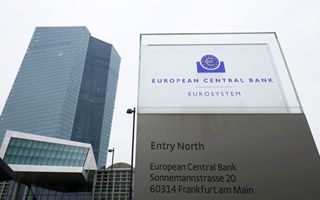(Finance) – Eurozone consumers’ perceptions of average inflation in the previous 12 months have fallen significantly, while average inflation expectations for the following 12 months have remained unchanged and those for the next three years have increased slightly. This is what emerges from the Consumer Expectations Survey from the European Central Bank (ECB) referring to the month of July 2024.
Inflation
The median rate of perceived inflation in the previous 12 months fell sharply to 4.1% in July, from 4.5% in June. Meanwhile, inflation expectations over the one-year and three-year horizons remained below the perceived inflation rate in the past. median inflation expectations over the next 12 months remained unchanged at 2.8% for the third consecutive month, after falling in May to the lowest level since September 2021. Median three-year inflation expectations rose by 0.1 percentage point in July to 2.4%.
THE’uncertainty about expectations inflation over the next 12 months remained unchanged at the lowest level since February 2022, when Russia invaded Ukraine. Developments in inflation perceptions and expectations remained relatively aligned across income groups. The most young (aged 18 to 34) continued to report lower inflation perceptions and expectations than older respondents (aged 35 to 54 and aged 55 to 70).
Income and consumption
The income growth expectations Consumers’ nominal income expectations fell to 1.1%, from 1.4% in June. The decline in income expectations was broad-based across age and income groups, but more pronounced for the bottom two quintiles.
The spending growth perceptions nominal spending growth over the preceding 12 months fell further to 5.4%, from 5.8% in June and 5.9% in May. The latest data point extends a sustained decline that began in March 2023. Expectations for nominal spending growth over the next 12 months also fell, to 3.2% from 3.3% in June. Nominal spending expectations are at their lowest level since February 2022, when Russia invaded Ukraine.
Economic growth and the labor market
The economic growth expectations for the next 12 months have become more negative, coming in at -1.0%, compared to -0.9% in June. Meanwhile, expectations for the unemployment rate over the next 12 months remained unchanged at 10.6%, the lowest level since the start of the series. Consumers continued to expect the future unemployment rate to be only slightly higher than the perceived current unemployment rate (10.1%), implying a largely stable labor market.
Quarterly data showed that unemployed respondents reported a decrease in their predicted probability of finding a job in the next three months, dropped to 26.6% in July, from 27.5% in April. Employed respondents also reported that their expected probability of losing their job in the next three months increased to 8.9% in July, from 8.7% in April. (Economic Growth and Labor Market Outcomes)
Housing and access to credit
As of July 2024, consumers expected the price of their house to increase by 2.6% over the next 12 months, slightly slower than in June (2.7%). Households in the lowest income quintile continued to expect higher house price growth than those in the highest income quintile (3.2% and 2.5%, respectively), although the difference narrowed slightly. interest rate expectations on 12-month mortgages remained stable at 4.8%. As in previous months, households in the lowest income quintile expected the highest 12-month mortgage interest rates (5.4%).
The net percentage of households reporting a tightening (versus those reporting a loosening) inaccess to credit in the previous 12 months declined further, as did the net share of those expecting a tightening in the next 12 months. Both indicators remained close to levels last seen in the second quarter of 2022. The share of consumers who reported having made credit application over the past three months, measured on a quarterly basis, increased to 17.2% in July from 16.8% in April. The number of applications from the lowest income quintiles continued to rise, reaching the highest level observed since the start of the series.
